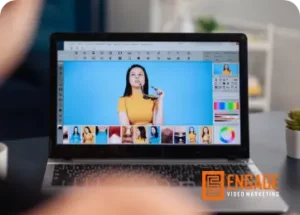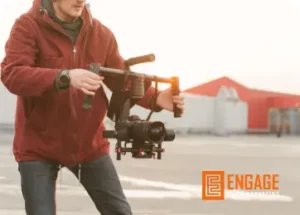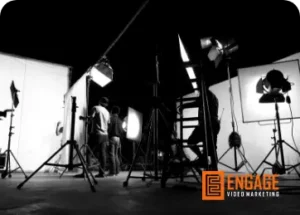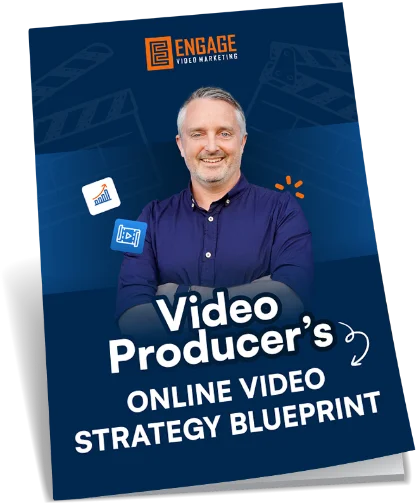When it comes to YouTube optimization, one of the things that I see most commonly underutilised is the YouTube descriptions. But how important are YouTube descriptions now anyway, and how can we maximize that space in order to set up our videos for maximum success?
When it comes to YouTube optimization, you probably already understand that there is a certain hierarchy of importance of things that you need to pay attention to, to ensure that your video is set up for optimum success on the channel.
Content
Number #1 is the content itself. Awesome content, that quickly engages your ideal audience quickly and keeps them watching is your number 1 goal for YouTube. Watch the video here for more tips on what should actually be in your video. But when we’re talking descriptions what we’re really talking about here is metadata, or what you can control around your video, to ensure it’s optimized for success.
Thumbnail
When it comes to YouTube optimization there is a hierarchy of importance to understand so you can determine where the description fits in. At the top is the thumbnail. If your thumbnail fails to attract attention and encourage an audience to want to watch then you’ve lost before you’ve even got started with your video.
Video Title
Next, and closely related to the Thumbnail is the title of your video. Again, this is critical to get right, both from a search perspective and more importantly from your audience perspective. How is your title encouraging someone to want to click through to your video?
Video Description
Once you’ve got those things nailed, now it’s time to write a killer YouTube description.
In the next few minutes, I’m going to break down some of the best tips that I’ve come across and that I encourage our clients to use when they’re writing the description field of their YouTube videos.
Use keywords and phrases
First of all, as you probably know YouTube is one of the largest search engines in the world. So, the first thing to recognize is that descriptions can convey valuable information that really helps viewers find your videos in search results. And importantly, from a human perspective, understand what it is that they’ll be watching. So, when you write good descriptions, you need to consider adding the right keywords and key phrases, but importantly you want to be using natural language, not just a stream of keywords. Remember that we’re writing for the audience first, algorithm second.
Put the most important words in the first 3 lines
Plan to work the most important keywords for your videos towards the beginning of your description. Ideally in the first three lines within about 140 characters. This part will appear in search results and your video watch page above the ‘show more’ link, so really take the time to consider what is going be feature in this section.
Do your keyword research
Take the time to do your research on what keywords or phrases are going to be most valuable to target for your video. Google Trends and the Google Ads Keyword Planner, can be used to identify popular keywords. One of my favorite tools, which is to TubeBuddy. So do your research and get some of those keywords and key phrases into your description as well as your title.
How long should a YouTube description be?
As of 2021, you’ve got a maximum of 5000 characters allowed in that description field. So you really want to maximize your use of that. Think of the description in two parts:
- You’ve got what the viewers see before they click the show more. So that’s effectively the first 140 characters, think of it like a tweet, right?
- And then you’ve got what they see after they click show more – that’s where you can be really strategic about what you include both for this video, and with respect to your overall channel and business.
The first three lines are your priority here. In many cases, a viewer will actually scan the description both when it comes up within YouTube’s search. Or when they click on your video they’ll do a quick scan of the first few lines of the description to ensure that they’re in the right place. And that this is a video that they want to watch. Get to the point here, and write a compelling sentence or two that outlines the value that someone will get by watching your video, and consider putting one clickable link in these opening lines where it is highly relevant to your content. By clickable, I mean making sure you use the https:// stuff in the URL. Doing this ensures it becomes a clickable hyperlink.
Now below those first three lines, that’s the place to add a further paragraph or two adding context to your video and any other key information about the video, your channel, and even links to social networks or your website, trackable Bitly link or an affiliate link to something that you’re referring to in your video. It’s a great idea to actually reference some of those links within your content.
Using upload defaults for your description
I recommend here to use the upload defaults for your descriptions. But a caution here, if you are using the default description functionality, you want to make sure that each video has a unique description or at least a good portion of your description is unique to each video which makes it easy to find through search and makes it stand out from other similar videos.
Using Timestamps or Chapter Markers in your description
To really take your descriptions to the next level you’ll also want to consider interactive elements such as timestamps or chapter markers. Timestamps, are clickable links in your description, which will help viewers skip to important parts of your longer videos or to skip back to reference things they may have missed or wish to rewatch. To add timestamps to your descriptions simply add the relevant minutes and seconds using a colon in between like this, and they’ll become clickable on your watch page, and add chapter markers, super simple and highly effective. Using some interactive features like timestamps in many cases will actually encourage higher retention as viewers will be able to use your video as a resource so that they can go to specific parts of interest in your video.
Adding links to playlists or other channels
Another aspect to consider for interactivity in your descriptions, is linking to playlists of related videos or tagging other creators or collaborators on YouTube.
Now once you’ve done the work to write a highly effective description on your YouTube videos, then you want to take the time to actually measure the effectiveness of this too.
So I recommend taking some time to find out how your description looks on different pages and devices, checking what can be seen above the ‘show more’ link in different scenarios, and also paying attention to how your video performs in YouTube analytics to see if your video is attracting the right viewers through the right keywords and key phrases.
Using Analytics to improve your descriptions
Have a look at your YouTube analytics and check what keywords lead people to your videos. If any major or important keywords don’t appear in your search report, it may be because you never added those words into your descriptions. So, act like you’re the viewer or the audience and pretend that you’re searching for your video. What would you type into the search bar? Those words should be in your description. It’s as simple as that.
Using Hashtags in the YouTube Description
Now, what about hashtags in YouTube descriptions? Hashtags are relatively new in the scheme of things for YouTube, and YouTube does recommend that you use related hashtags in your video descriptions to help viewers find your video when they search for a specific hashtag.
You’ll want to use hashtags in key parts of your descriptions just within the natural flow of the written content. And you can use up to 15 hashtags, however don’t go overboard as YouTube will ignore any hashtags over those 15. Your first three hashtags within your description will be highlighted above the title line on your video. A caution here to only use hashtags that are directly relevant to the content in your video, don’t try to game the system by using unrelated or popular hashtags that don’t have anything to do with your video. It is a good idea to capitalise on trending hashtags when they are relevant but only when your content is about that same trending topic.
Ensuring Advertiser Friendly descriptions for better monetization
Here’s a pro tip particularly for those channels within the YouTube Partner Program and running ads. Be careful of the words you use within your description, to ensure that you’re using advertiser friendly words.
YouTube advertisers can target videos to place their ads based on the keywords and phrases within the video and the description, and equally they can also choose words or content to AVOID running their ads alongside. So, you’ll definitely want to avoid profanity or anything controversial or sexually suggestive. Even if you’re being funny or ironic, or it’s otherwise not offensive within the context of the description, but you just want to be careful of avoiding any of those words or keywords within your descriptions. Because that may actually prevent advertisers from choosing to run ads on your video.
And remember, the content of your descriptions is editable any time you wish, so following this these tips I recommend you take some time to look at your channel, and the descriptions you’ve added.
- Are there things you can do better?
- Can you update some parts, or add some timestamps?
To make this job super easy, why not check out TubeBuddy’s Bulk Text Replacement tool to make this job as easy as just a few clicks.



